
But it is also the 70th anniversary of John Basilone’s burial at Arlington National Cemetery and the unveiling of the Basilone Statue.
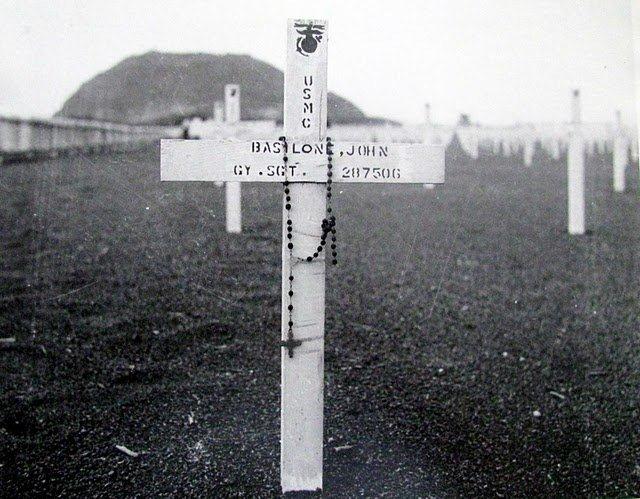
Since John was a Medal of Honor recipient the family was able to chosen the specific plot from within the designated area of land. They chose one close to the road. Today this makes visiting his grave convenient for those who go to the site.
buried at Iwo Jima
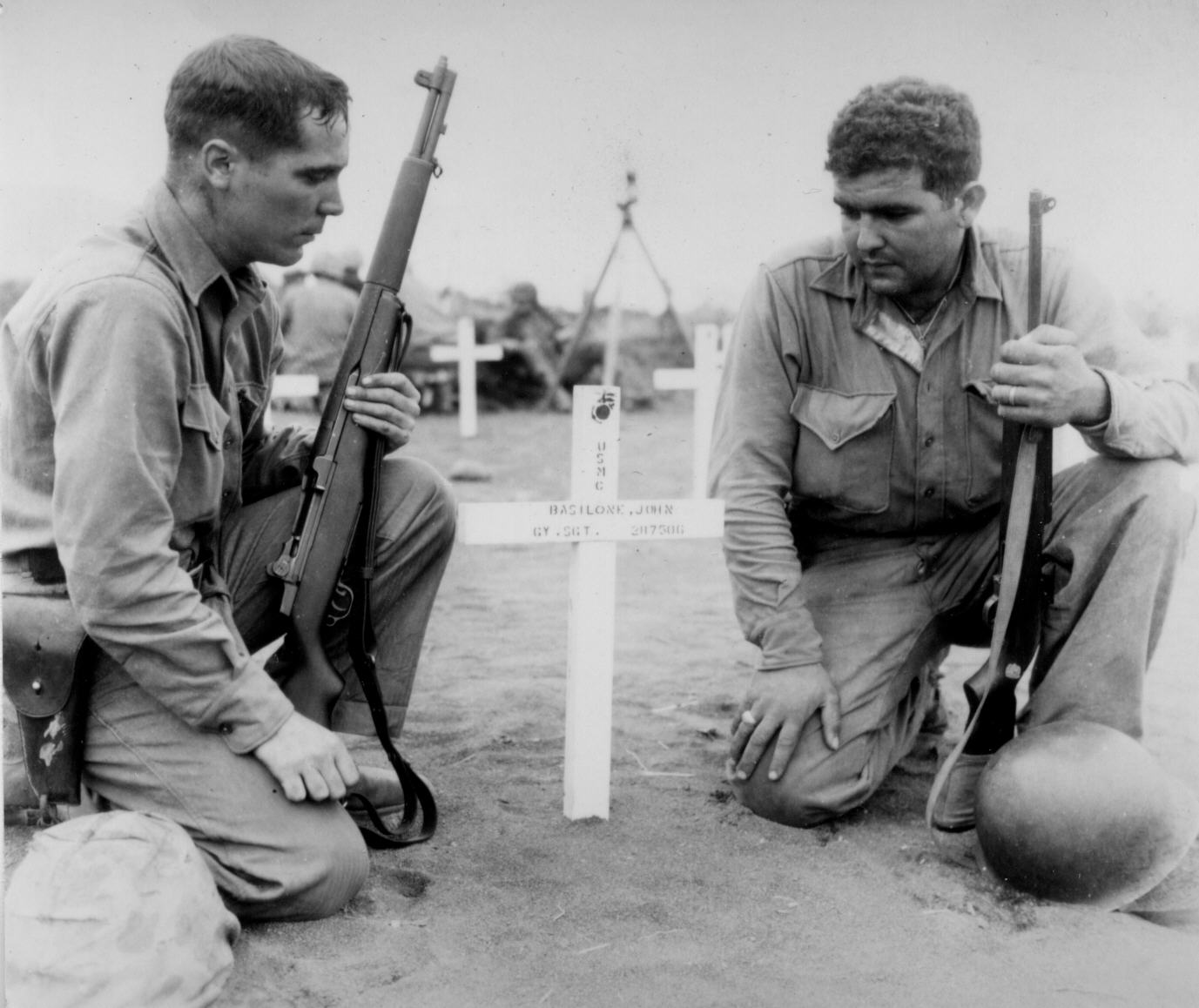
Other Raritan residents included Mayor Rocky Miele, Postmaster Dominic Soriano, Basilone’s friend Steve Del Rocco, his old boss Alfred Gaburo, Joe Navatto Jr. , and Father Russo of St. Ann’s. Everyone who travelled to Arlington that day had expected a small simple funeral. When they arrived, they were amazed. There they saw dozens of military dignitaries, a Marine Band, and uniformed soldiers. For on that day eighteen fallen soldiers that had been moved from Iwo Jima were being buried, so the Military went all out.
Basilone at his grave at Iwo Jima
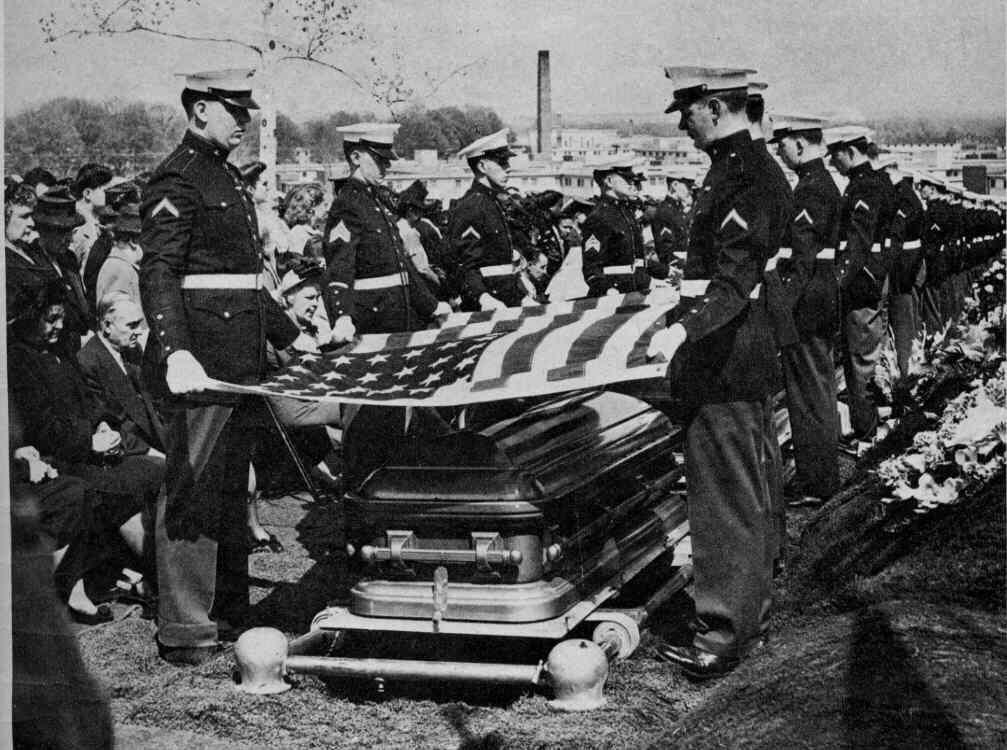
It was an impressive, inspiring service, an appropriate tribute to an unselfish hero. An American Flag had first covered the coffin, and then as is customary, it was later taken off, folded up and presented to the Basilone Family. Anthony Bongiovi, in a 2003 interview, said that the funeral was simply unbelievable. He recalled that it was during the playing of Taps that everyone became emotional. From the list of those who attended that day at Arlington, it does not appear that anyone is still alive. (John’s brother Donald, who is still alive today, was in the Marines at the time and could not attend.)
Arlington National Cemetery
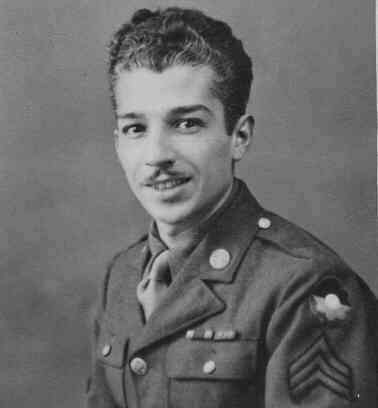
It was easy to pick who should build the statue for John’s childhood friend Philip Orlando was a sculptor/artist. Philip had also served in World War II. He saw action and earned the Bronze Star as his unit marched through France, Belgium and Germany.

Orlando used photographs and his own recollections to design it. John’s parent’s Salvatore and Dora visited with Philip Orlando at his studio and gave their endorsement.
The design he came up with is representative of John Basilone at Guadalcanal on the night he earned The Congressional Medal of Honor. John is stripped to the waist and holding the Browning machine gun that he used that night. Over his shoulder is a cartridge belt of ammunition, just like the one that he had carried through the jungle in the darkness while braving enemy fire. Around his neck is a crucifix and his “dog tags”
in Plainfield designing the statue
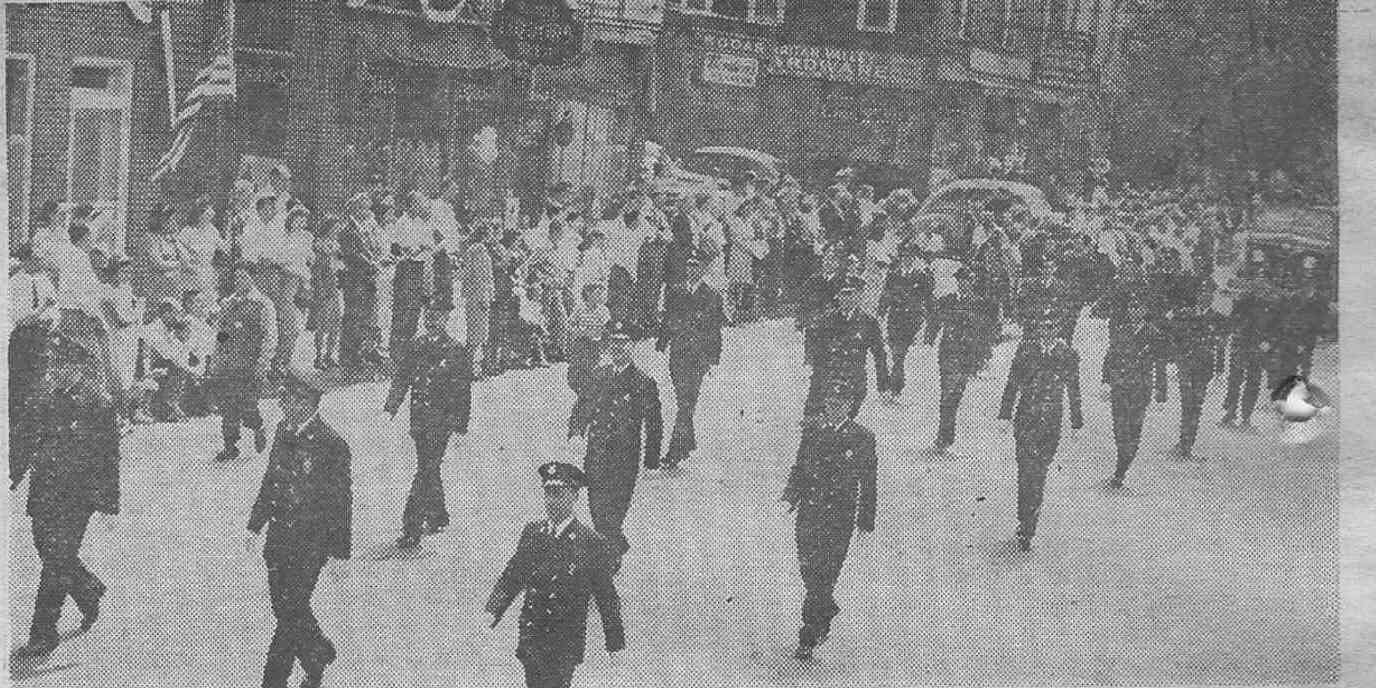
The unveiling day featured a parade and ceremony similar to today’s Basilone Parade. There were numerous military groups and civic organizations that marched down Somerset Street as thousands watched. The local newspaper estimated the large crowd at over 10,000.
before the statue unveiling

First a Marine Band played the Marine Hymn. When the song ended it became quiet and John’s mother Dora approached the statue as the crowd eagerly watched. She pulled a cord that caused the cover to fall to the ground. At first a wave of awe sprang from the crowd, then there was a long moment of silent admiration.
Six wreaths, each with one letter spelling out “At Rest”, were then placed in front of the statue.

Mayor Rocky Miele also spoke saying “John Basilone, our boyhood chum, stands before us immortal. He died to make democracy live and to keep us free. Let him be the inspiration for our efforts, for the preservation of peace.” The mayor then read a list of the other Raritan men who died fighting for our country.
Statue maker Philip Orlando spoke briefly. He said that he had been unable to visual Basilone in an angry fighting mood, so he depicted him at a moment of victory.
For 70 years now, the statue has stood as an enduring tribute to John Basilone and the ongoing fight for freedom and democracy.
Iwo Jima, visited Raritan a couple times.